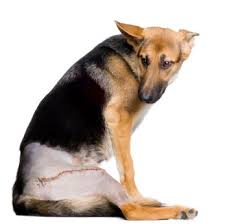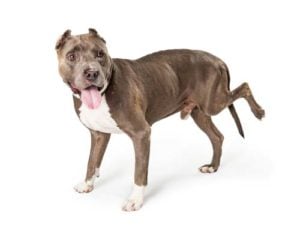Archive for May 8th, 2019
Detecting a Hip Problem in Dogs
As our best friends age, you may notice some changes in their behavior that could point to a hip problem. Older and overweight dogs are more prone to hip problems.

Topdogtips.com has put together a comprehensive list of signs to look for.
Signs of Hip Problems in Dogs
Most of the symptoms of dogs’ hip problems can be spotted easily and quickly because these issues tend to be very painful and your pup will certainly let you know that he’s uncomfortable, particularly when you try to touch him.
1. Decreased Activity
Dogs with hip problems often become less active. You may notice that your pooch is resting or sleeping more, or that he doesn’t show enthusiasm for walks or playtime. While this can often be attributed to aging in general, it is also very likely that your Fido is in pain.
2. Problems with Standing Up
Standing up from a lying position can be a difficult task for dogs with hip problems. This is often noticeable in the morning because the slowness with standing up usually correlates to the length of time the dog was inactive. You might not spot this issue so easily later in the day when your dog warms up a bit. However, even then you may notice a decreased range of motion.
3. Lameness in the Hind End
Depending on the severity of the hip problem, you may notice intermittent or constant lameness in your dog’s hind legs. This can also lead to a visible increase in the size of his shoulder muscles since they have to compensate for the hind end. You may be able to notice a narrow stance in your dog’s hind limbs, which is recognizable by the back legs that are positioned unnaturally close to each other.
4. Problems with Jumping or Climbing Stairs
Any problem with hips will affect your dog’s rear legs, which play a crucial part in his ability to jump or climb stairs. If your dog’s condition is not serious, he might simply exhibit reluctance to jump or climb stairs. However, as the issue with dog’s hips progress he may end up becoming completely reliant on your assistance with these tasks.
5. Bunny Hopping
This term refers to a change in gait that some dogs with hip issues exhibit and it is named “bunny hopping” because dogs lift both hind legs simultaneously, just like a rabbit does when he jumps. This usually happens when a dog is walking but it can also occur while running or walking up or down the stairs.
Remember, your pets count!
Your oldies station is Edgewater Gold Radio, playing your favorite oldies for over 17 years. Join us today for the 50s 60s 70s and 80s. Ask Alexa to “play Edgewater Gold Radio or listen from our website: Edgewater Gold Radio.com.
